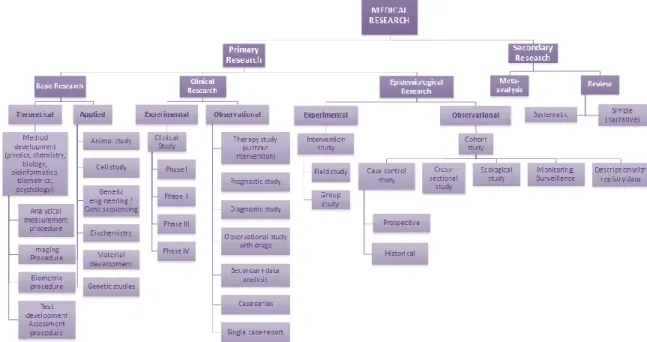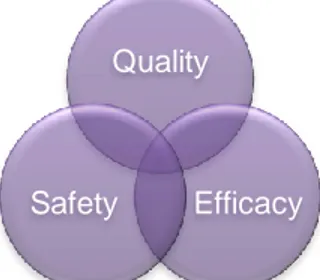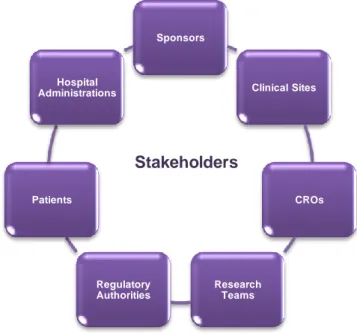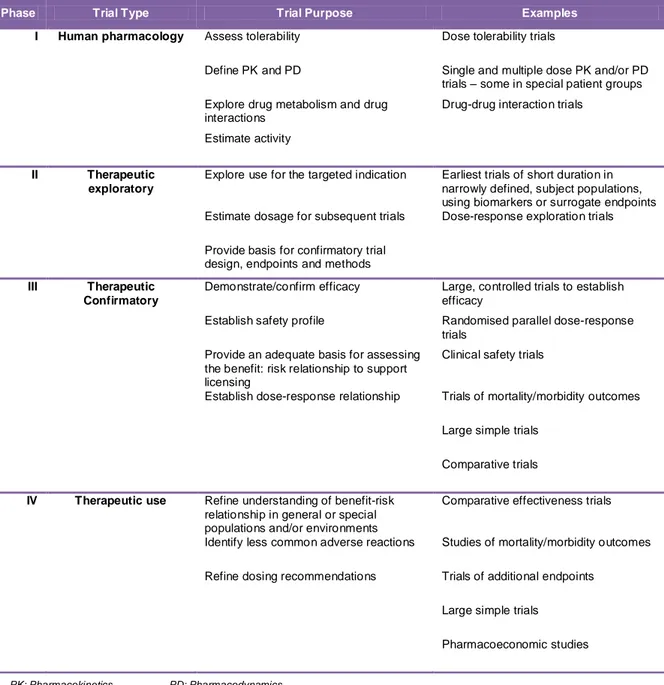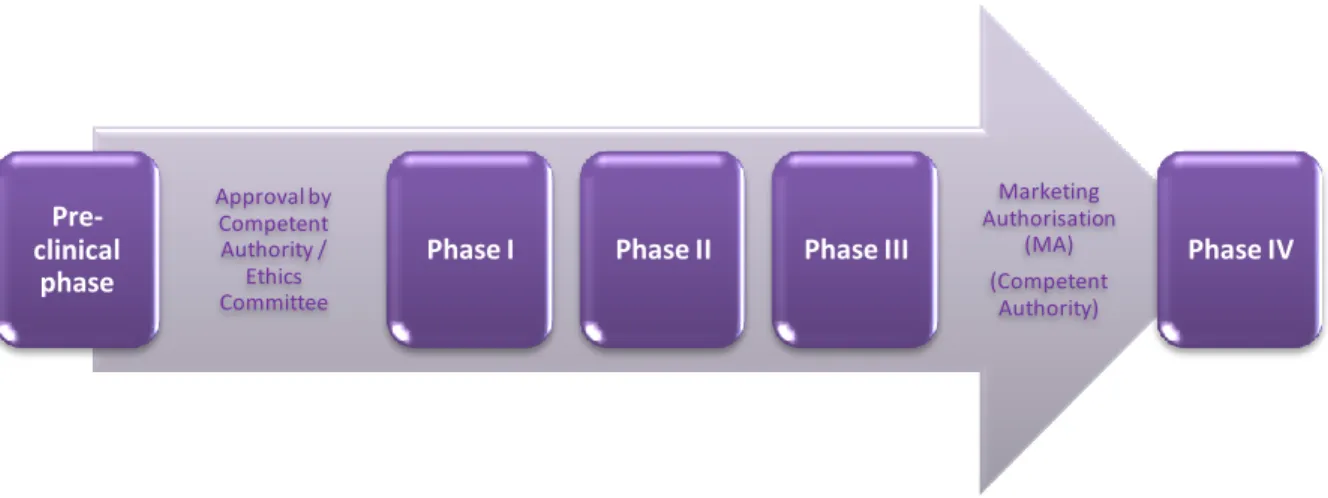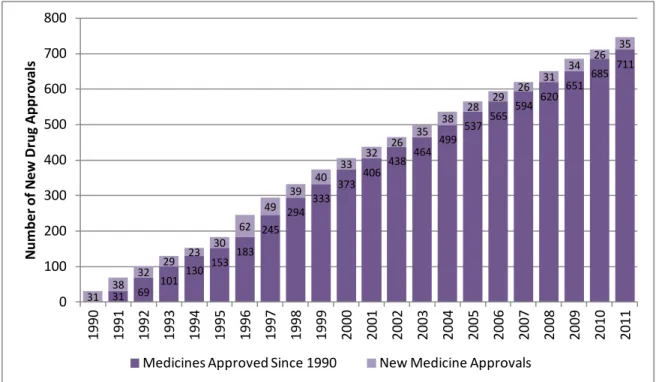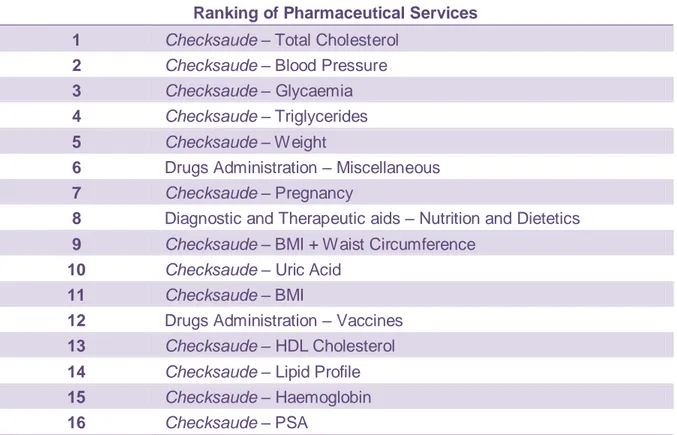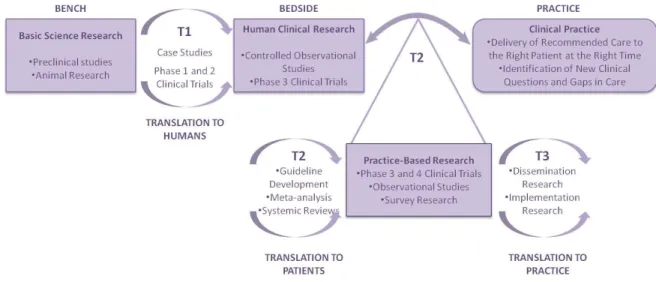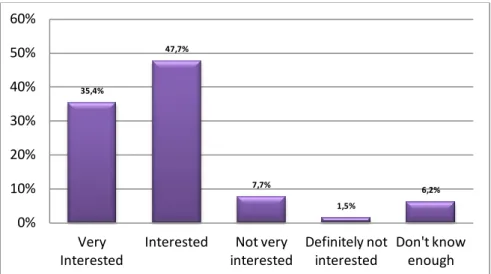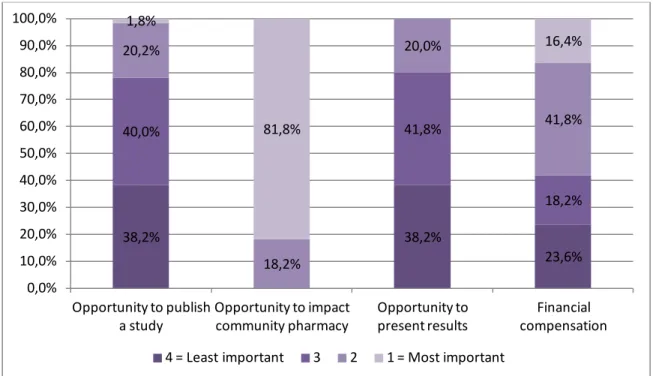Universidade de Aveiro Ano 2014
Secção Autónoma de Ciências da Saúde
DIANA ROCHA
LOPES SILVA
CLINICAL
RESEARCH
IN
COMMUNITY
Universidade de Aveiro Ano 2014
Secção Autónoma de Ciências da Saúde
DIANA ROCHA
LOPES SILVA
CLINICAL
RESEARCH
IN
COMMUNITY
PHARMACIES – TRYING TO FIND A WAY
Projeto apresentado à Universidade de Aveiro para cumprimento dos requisitos necessários à obtenção do grau de Mestre em Biomedicina Farmacêutica, realizada sob a orientação científica do Professor Doutor Bruno Miguel Alves do Gago Professor Auxiliar Convidado da Secção Autónoma de Ciências da Saúde da Universidade de Aveiro
"Research is to see what everybody else has seen, and to think what nobody else has thought." Albert Szent-Gyorgyi
o júri
Presidente Prof. Doutor Nelson Fernando Pacheco da Rocha
Professor Catedrático, Universidade de Aveiro
Vogal Prof. Doutora Alexandra Isabel Cardador de Queirós
Professora Coordenadora S/ Agregação, Universidade de Aveiro
Vogal Prof. Doutor Bruno Miguel Alves Fernandes do Gago
Professor Auxiliar Convidado, Universidade de Aveiro
Agradecimentos Estas páginas estariam em branco sem o contributo e precioso apoio de todos aqueles que comigo partilharam este caminho…
Agradeço ao Prof. Dr. Luís Almeida, pelo enorme entusiasmo com que me deu a conhecer este fascinante mundo que é a Biomedicina Farmacêutica. Pela ajuda na tentativa de encontrar o caminho, e pelo desafio que me propôs de realizar este trabalho.
Ao Prof. Dr. Bruno Gago, pelo apoio durante todo o mestrado, pela enorme disponibilidade e ajuda. E pela orientação e apoio na elaboração deste trabalho.
Aos colegas que tive o privilégio de conhecer durante este percurso. E aos amigos que me têm acompanhado! À Susana e à Zulmira, por me fazerem sentir parte da equipa desde o primeiro momento, por todo o apoio e amizade!
Aos meus pais, o meu verdadeiro exemplo de força e determinação, que desde sempre me mostraram que tudo é possível, basta acreditarmos. São os meus ídolos!
Aos meus irmãos, Guido e Lucas, e à Patrícia, por tantas conversas, partilha de angústias, apoio e vontade de vencer!
Ao Nélio, meu amor e companheiro de todas as horas, por estar sempre presente e nunca me deixar desistir! A todos, muito obrigada!
Palavras-chave Farmácia, Farmácia Comunitária, Farmacêutico, Investigação Clínica, Ensaio Clínico
Resumo Este projeto propõe-se promover o envolvimento dos
farmacêuticos de farmácia comunitária em investigação clínica. Nos últimos anos, a profissão farmacêutica tem passado por vários desafios. Ao mesmo tempo, os farmacêuticos têm procurado desenvolver um papel mais interventivo na comunidade. As competências que os farmacêuticos têm permitem-lhes um papel mais interventivo em investigação clínica, quer cooperando com as unidades de saúde, quer como investigadores. A proximidade ao utente e a inserção na comunidade, permite às farmácias comunitárias terem um papel importante em investigação clínica. A realidade portuguesa, até ao momento, não parece acompanhar a realidade doutros países neste âmbito. No entanto, Portugal reúne as condições necessárias para que essa realidade se altere. A crescente importância dos dados de vida real e o posicionamento das farmácias na comunidade deixam espaço para que a sua intervenção em investigação clínica possa ser melhorada. Assim, num futuro próximo será importante que as farmácias comunitárias sejam chamadas para esta realidade. Este projeto sugere a aplicação futura de um questionário de modo a avaliar a sua exequibilidade, avaliando o interesse das farmácias comunitárias portuguesas em investigação clínica e as possíveis barreiras à sua participação.
keywords Pharmacy, Community Pharmacy, Pharmacist, Clinical Research, Clinical Trial
abstract This project aims to promote the involvement of
community pharmacists in clinical research. In the last years, the pharmaceutical profession has gone through various challenges. At the same time, pharmacists have sought to develop a more active role in the community. The skills that pharmacists have allow them a more active role in clinical research, either cooperating with health units, either as researchers. The proximity to the patient and the placing in the community, allows community pharmacies to have an important role in the disclosure of clinical research. The Portuguese reality, so far, does not seem to reflect the reality of other countries in this field. However, Portugal has the necessary conditions for this situation to change. The growing importance of real world data and the placement of pharmacies in the community leave space for its involvement in clinical research to be improved. Thus, in the near future it would be important that community pharmacies are called upon to this reality. This project suggests the application of a questionnaire to Portuguese community pharmacies in order to assess the feasibility of this project, evaluating their interest in clinical research and identifying the possible barriers to their participation.
T
ABLE OF
C
ONTENTS
Table of Contents ... I Figures and Tables Index ... III Abbreviations and Acronyms ... V
1. Introduction ... 1
1.1. Objectives ... 1
1.1.1. Methods ... 2
1.1.2. Structure... 2
2. Clinical Research Overview ... 3
2.1. Clinical Trials - Context ... 3
2.2. Clinical Trials Key Stakeholders ... 5
2.3. Clinical Trials Classification ... 6
2.4. Clinical Trials Phases ... 7
2.5. Other Types of Clinical Research Studies ... 9
2.6. New Drug Development ... 10
3. Clinical Research in the Context of Community Pharmacy ... 13
3.1. Pharmacists: Scope of work ... 13
3.2. Pharmacists’ Role in Clinical Research ... 15
3.3. Practice-Based Research ... 16
3.4. Community Pharmacy Research Network (CPRN) ... 20
3.5. The role of Community Pharmacists in Clinical Trials ... 22
3.5.1. Recruitment ... 23
3.5.2. Education about Clinical Trials ... 26
4. Clinical Research in a Community Pharmacy Setting – Real-Life examples ... 29
4.1. Randomised Clinical Trials on Study Drugs... 29
4.1.1. Community pharmacists as local investigators in a clinical trial: the Sinutab® study ... 29
4.2. Randomised Clinical Trials on Pharmaceutical intervention programs ... 30
4.2.1. Effectiveness of a Community Pharmacist Intervention in Diabetes Care: a Randomised Controlled Trial ... 30
4.2.2. Randomised Controlled Trial Protocol on intervention in Depressed Primary Care ... 31
4.3. Real World Data on Pre-licenses... 33
5. Clinical Research – The Portuguese Reality ... 35
5.1. Portuguese Authorities ... 35
5.1.1. Infarmed... 35
5.1.2. CEIC ... 36
5.1.3. CNPD ... 38
5.2. Circuit of the Experimental Drug ... 39
5.3. Portuguese New Law on Clinical Research – Law No. 21/2014, of 16th April .... 42
5.4. Studies Performed in the Portuguese Community Pharmacies Setting ... 44
6. The Next Step - Application of a Questionnaire... 47
7. Discussion ... 53
8. Conclusion ... 59
F
IGURES AND
T
ABLES
I
NDEX
Figure 1. Classification of different study types (adapted from (5)). ... 3
Figure 2. Standards in Clinical Development. ... 4
Figure 3. Clinical Trials’ Stakeholders (adapted from (10)). ... 5
Figure 4. Clinical Trials’ phases in the development of new medicines (adapted from (10))... 9
Figure 5. Cumulative Approvals for Medicines in USA (1990-2011) (adapted from (11)). 11 Figure 6. The importance of practice-based research for translating research into practice (adapted from (31)). ... 17
Figure 7. Level of interest in participation in a CPRN of independent community pharmacists (n=65) (adapted from (30)). ... 21
Figure 8. Motivators in decision to participate in a CPRN of independent community pharmacists (n=65) (adapted from (30)) ... 21
Figure 9. Level of importance in decision to participate in a CPRN of independent community pharmacists (n=65) (adapted from (30)). ... 22
Figure 10. Recruitment and enrollment of participating pharmacies (adapted from (47)). 25 Figure 11. Topics which pharmacists feel prepared to discuss with a patient/customer (adapted from (48, 49)). ... 27
Figure 12. Study Design (adapted from (55)). ... 32
Figure 13. Number of Submissions to CEIC in 2013 (N=794) (adapted from (66)). ... 36
Figure 14. Favourable and Unfavourable opinions (% of total) (New Trials, N= 108; Substantial Amendments, N=559) (adapted from (66)). ... 37
Figure 15. Number of opinions (Clinical Trial) by Therapeutic Area (N=108) (adapted from (66))... 38
Figure 16. Questionnaire of registration of study variables (adapted from (77))... 46
Figure 17. Community Pharmacy Research Network Survey (adapted from (30)). ... 50
Figure 18. SWOT analysis of Carr et al’s questionnaire application in Portugal ... 56
Table 1. A classification of clinical trials by type and purpose (adapted from (7)). ... 8
Table 2. Ranking of Pharmaceutical Services (Associação Nacional das Farmácias (ANF) - 2010) (adapted from (25)). ... 14
Table 3. Descriptive Statistics about the time (days) to issue the final opinion, per type of application, in 2013 (adapted from (66)). ... 37
A
BBREVIATIONS AND
A
CRONYMS
AE Adverse Event
ANF Associação Nacional das Farmácias (National Association of Pharmacies) APPE Advanced Pharmacy Practice Experience
APSC American Pharmacy Services Corporation BLA Biologics License Application
CEC Comissão de Ética Competente (Competent Ethics Committee)
CEFAR Centro de Estudos e Avaliação em Saúde (Centre for Health Evaluation & Research)
CEIC Comissão de Ética para a Investigação Clínica (Ethics Committee for Clinical Research)
CES Comissão de Ética para a Saúde (Ethics Committee for Health)
CISCRP The Center for Information and Study on Clinical Research Participation CNPD Comissão Nacional de Proteção de Dados (National Committee for Data
Protection)
COPD Chronic Obstructive Pulmonary Disease CPRN Community Pharmacy Research Network CRA Clinical Research Associate
CRC Clinical Research Coordinator CRO Clinical Research Organisation CTA Clinical Trial Application
CTP Clinical Trial Protocol
DeCS Health Sciences Descriptors DPI Dry-Powder Inhaler
EFPIA European Federation of Pharmaceutical Industries and Associations EMA European Medicines Agency
EU European Union
FDA Food and Drug Administration FF/VI Fluticasone Furoate/Vilanterol GCP Good Clinical Practice
GSK GlaxoSmithKline
GLP Good Laboratory Practice GMP Good Manufacturing Practice GP General Practitioner
Hb1Ac Glycated Haemoglobin (Haemoglobin A1C) IB Investigator’s Brochure
ICF Informed Consent Form
ICH International Conference on Harmonisation of Technical Requirements for Registration of Pharmaceuticals for Human Use
IEC Independent Ethics Committee IMP Investigational Medicinal Product IRB Institutional Review Board
IWRS Interactive Web Response System LABA Long-Acting β-Agonist
MA Marketing Authorisation MeSH Medical Subject Headings
MHRA Medicines and Healthcare products Regulatory Agency
MSC Major Symptom Complex
NHP Natural Health Product
NICE National Institute for Health and Care Excellence NIHR National Institute for Health Research
OF Ordem dos Farmacêuticos (Pharmacists’ Association)
OTC Over the Counter
PPR Pharmacy Practice Research
pRCT Pragmatic Randomised Clinical Trial
PRODEFAR Pharmaceutical Care Program for Pharmacological Treatment of Depression in Primary Care
R&D Research & Development RCT Randomised Controlled Trials
RNEC Registo Nacional de Estudos Clínicos (National Register of Clinical Studies) SIR Salford Integrated Record
SmPC Summary of Product Characteristics
SONAR Pharmacy Study Of Natural Health Product Adverse Reactions SOP Standard Operational Procedure
SWOT Strengths, Weaknesses, Opportunities and Threats
UK United Kingdom
USA United States of America WHO World Health Organisation
1.
I
NTRODUCTION
Over the years, the profession of Pharmacy has begun to undertake major changes in practice. Driven by marketplace realities the profession has recognized the need to provide cognitive services either than the traditional role of product supply which has made pharmacists feel their skills as underused (1, 2).
The increased personal interest in these issues and the development of competences on clinical research during the curricular period of the Master course in Pharmaceutical Medicine led to develop the hypothesis of integrating both worlds.
The current paradigm of Portuguese healthcare and particularly the changes faced on the Community Pharmacy setting make it possible to understand recent initiatives of extending community pharmacists’ role within this framework (2, 3). In order to increase pharmacist’s interest in research and promote their involvement, there is a need to fully investigate the barriers and facilitators to this new role (1).
This project aims to show the international reality on this issue, in order to be the basis of further studies. It is intended that this work can be used as a guide and a facilitator for introducing clinical research, and clinical trials particularly, in the context of Portuguese community pharmacies.
1.1.
O
BJECTIVESThe information about clinical trials in a community pharmacy setting is limited in a global perspective and very scars when talking about the Portuguese reality. In an attempt to help fulfilling this gap the objective of this project is to identify the role pharmacists have and/or might have in clinical research; particularly, the potential role of community pharmacies in clinical trials.
A global revision on this subject will be presented in order to help to delineate a possible strategy that can help to enhance the role of Portuguese community pharmacies in clinical research in the future.
1.1.1. METHODS
This work consists in a review of international peer-reviewed literature on scientific databases ISI Web of Knowledge and PubMed using MeSH (Medical Subject Headings) and DeCS (Health Sciences Descriptors) terms “community pharmacies”, “clinical trial” and “clinical research”. Other main search term used was “pharmacist” due to its relevance for this study. The search was focused in publications of the last five years, although some older publications were also used due to its relevance for the study or because it is a primary source which should be cited. Clinicaltrials.gov and clinicaltrialsregister.eu were also consulted in order to find clinical studies in community pharmacies. The search was extended for English and Portuguese manuscripts, because it is the language of proficiency of the research team and of the target population.
Reference lists of retrieved studies were reviewed for relevant articles. Studies were assessed for relevance based on the abstracts. Relevance was judged by health improvement and the role of community pharmacy and community pharmacists, particularly. Manuscripts in which community pharmacy or community pharmacist were not a major heading were excluded.
Grey literature such as conference proceeding, abstracts, presentations and technical reports were identified on these topic using generic search engines (e.g. Google).
The findings are presented as a narrative summary.
1.1.2. STRUCTURE
To answer the issue in debate, it was necessary to verify the current situation (state of the art) of clinical research, particularly of clinical trials.
In attempt to positioning the community pharmacy in clinical research, it is described what has been done on this subject and in chapter 4 some real-life examples are shown.
In chapter 5 it was tried to transpose this kind of research to Portuguese reality and a brief description of the involved stakeholders is made. Then a suggestion is given: a questionnaire to be filled out by Portuguese pharmacies. This questionnaire lacks translation and validation to the Portuguese population; therefore, in this chapter Strengths, Weaknesses, Opportunities and Threats (SWOT) of its application are analysed.
In chapter 7, all data obtained are discussed and finally, in chapter 8 a conclusion of this project is presented.
2.
C
LINICAL
R
ESEARCH
O
VERVIEW
Clinical research is research that directly involves a particular person, or group of individuals, or that uses materials from humans, such as their behaviour or tissue samples. Clinical trial defines a particular case of clinical research. It is any investigation in human subjects intended to discover or verify the clinical, pharmacological, pharmacokinetic or pharmacodynamic effects of an investigational medicinal product (IMP), or to identify any adverse reactions to an investigational medicinal product, with the objective of determine its safety and/or efficacy. (4, 5) Figure 1 shows several types of medical research.
Figure 1. Classification of different study types (adapted from (5)).
2.1.
C
LINICALT
RIALS-
C
ONTEXTIt may never be known for certain who carried out the first controlled clinical trial. According to the written history, James Lind is considered the “father” of modern clinical trials, since he was the first one to conduct a recorded controlled clinical trial, in 1947. In 1753, he published his account of a trial of six potential remedies for scurvy. He allocated two scorbutic sailors to each treatment: cider, sulphuric acid, vinegar, seawater, nutmeg paste with barley water, or citrus fruit (two oranges and one lemon), once daily. This was
Quality
Efficacy Safety
an open trial, had no placebo arm, used only 12 patients and it cost almost nothing; yet it led to profound and permanent changes in clinical practice and in health of countless people (6). About 50 years later came what might be the first placebo-controlled double-blind clinical trial (7).
Medicines were not subjected to systematic trial until the 20th century, even though powerful and effective preparations had by then been in use for millennia (7).
The first large-scale randomised controlled clinical trial is generally recognised to be the United Kingdom (UK) Medical Research Council’s comparison of streptomycin plus bed rest with bed rest alone, in the treatment of pulmonary tuberculosis (8, 7). This trial which began recruiting patients in 1947 and whose results were published in 1948 became a landmark in the development of clinical trial methodology, because of its inclusion of a “best existing treatment” control group, its carefully organisation and its use of sealed randomisation envelopes (7).
These characteristics (use of control groups, randomisation and blinding) have become essential for the results of an interventional clinical study to be realistic.
In this way, 1990 is also a milestone in the history of clinical research. The International Conference on Harmonisation of Technical Requirements for Registration of Pharmaceuticals for Human Use (ICH) was assembled to help eliminate differences in drug development requirements for the three global pharmaceutical markets: European Union (EU), United States of America (USA) and Japan. The birth of ICH took place at a meeting in April 1990, hosted by European Federation of Pharmaceutical Industries and Associations (EFPIA) in Brussels. Representatives of the regulatory agencies and industry associations of Europe, USA and Japan met primarily to plan an International Conference. However, in this meeting wider implications and terms of reference of ICH were also discussed. The ICH initiatives promote increased efficiency in the development of new drugs, improving their availability to patients (9).
ICH stands Good Clinical Practice (GCP) guidelines whose principles represent agreed scientific guidance for meeting technical registration within the three ICH regions. The ICH Guidelines are not intended to be comprehensive guidance covering all aspects of product development and registration. Instead of this, they are intended to be used in combination with any regional requirements (9). Thus, ICH Guidelines objective is to standardize the conduction of clinical trials in accordance with GCP.
In the end of the day, ICH GCP Guidelines seek the development of drugs with Quality, Safety and Efficacy (cf. Figure 2).
2.2.
C
LINICALT
RIALSK
EYS
TAKEHOLDERSThe complexity of clinical trials associated to research and development of new medicines, implies the involvement of several stakeholders as described below (7, 10).
Figure 3. Clinical Trials’ Stakeholders (adapted from (10)).
Sponsors are generally pharmaceutical companies or academic institutions that are responsible for the conception, performance, and management or funding of clinical trials. Sometimes, these activities are subcontracted to Clinical Research Organisations (CROs) (7, 10).
Clinical sites are healthcare organisations (public or private funding), laboratories or other entities that gather the needed conditions (technical and human resources) to perform clinical trials. Nowadays, hospitals comprise the majority of the clinical trial sites and in this way, hospital administrations are also considered to be an important stakeholder in what concerns clinical trials (7, 10). Nevertheless, other clinical trial sites begin also to be recognised.
CROs may have several roles in clinical research since they may ensure all research activities or only a few ones (depending upon the scope of their individual work). There are several CROs around the world. Some of them are specialized in some areas of clinical research as clinical monitoring, data management, regulatory activities, pharmacovigilance, etc.
The clinical team is led by a principal investigator (usually a physician) who is responsible for the clinical trial at the site and clinical team coordination. This clinical team may include several figures since sub-investigators, study nurses, pharmacists, study coordinators,
Sponsors Clinical Sites CROs Research Teams Regulatory Authorities Patients Hospital Administrations Stakeholders
etc. (7, 10). Each one of them has a specific role among the clinical trial which is specified in the protocol and assigned in the delegation log.
Clinical trials may vary in size, and consequently can involve only a single research entity in one country, or multiple entities in multiple countries.
Regulatory Authorities are all those which regulate the pharmaceutical sector (10). Food and Drug Administration (FDA) and European Medicines Agency (EMA) are examples of regulatory authorities. In each country Local Authorities such as Infarmed (Autoridade Nacional do Medicamento e Produtos de Saúde, I.P. – National Authority of Medicines
and Health Products, in Engli), Ethics Committees as CEIC (Comissão de Ética para a Investigação Clínica – Ethics Committee for Clinical Research) and CES (Comissão de Ética para a Saúde – Ethics Committee for Health) and CNPD (Comissão Nacional de Proteção de Dados – National Committee for Data Protection) for Portugal have an important role in the country’s Clinical Research environment.
Patients are the central stakeholder in this scenario since they are the reason for clinical development. Depending on product type and development stage, investigators enrol volunteers first (Phase I), then patients into small pilot studies, and subsequently conduct progressively larger scale comparative studies. As positive safety and efficacy data are gathered, the number of patients typically increases.
All these stakeholders interact with each other in several ways. For instance, regulatory authorities assess the clinical trial application (CTA), as well as supervise its implementation and conduction. Sponsors contract a CRO to conduct, total or partially, the clinical trials. The clinical sites, sponsors and CROs contract investigators, and other technical and administrative staff. The research team identify and enrol patients that fulfil the criteria and accept to participate in the study (10).
All these interactions generate tax revenues to the Government (direct and indirectly). Moreover, additional revenues are generated from the development of new medicines (10).
2.3.
C
LINICALT
RIALSC
LASSIFICATIONClinical trials may be classified according to its purpose. The United States National Institutes of Health organises clinical trials into the following different types:
Prevention trials – to look for better ways to prevent disease in people who have never had the disease, or to prevent a disease from returning. These may include medicines, vitamins, vaccines, minerals, or lifestyle changes.
Screening trials – to test the best way to detect certain diseases or health conditions.
Diagnostic trials – to find better tests or procedures for diagnosing a particular disease or condition.
Treatment trials – to test experimental treatments, new combinations of drugs, or new approaches to surgery or radiation therapy.
Quality of life trials – to explore ways to improve comfort and quality of life of individuals with chronic diseases. These are supportive care trials.
Compassionate use trials – to provide partially tested, unapproved therapeutics to a small number of patients who have no other realistic options. Usually, this involves a disease for which no effective therapy has been approved yet, or a patient who has already failed all standard treatments and whose health is too compromised to qualify for participation in randomised clinical trials. Usually, case-by-case approval must be granted by both the FDA and the pharmaceutical company for such exceptions.
Other clinical trials’ classification is related to whether the trial design allows changes based on data accumulated during the trial:
Fixed trials consider existing data only during trial’s design. In these kind of trials, they are not modified after beginning and do not assess the results until the study is complete.
Adaptive clinical trials use existing data to design the trial, and then use interim results to modify the trial as it proceeds. Modifications include dosage, sample size, drug undergoing trial, patient selection criteria and "cocktail" mix. Adaptive trials often employ a Bayesian experimental design to assess trial's progress. In some cases, trials have become an ongoing process that regularly adds and drops therapies and patient groups as more information is gained. The aim is to sooner identify drugs that have a therapeutic effect and patient populations for whom the drug is appropriate.
2.4.
C
LINICALT
RIALSP
HASESClinical drug development involving new drugs are commonly classified into four phases. The drug development process will normally proceed through all four phases over several years. As said before, in a classic approach, the results from each phase determine the design of the next. The successful surpass through these phases will usually lead to the approval by the regulatory authority of a Marketing Authorisation (MA) of a new medicine (7).
Table 1. A classification of clinical trials by type and purpose (adapted from (7)).
Phase Trial Type Trial Purpose Examples
I Human pharmacology Assess tolerability Dose tolerability trials
Define PK and PD Single and multiple dose PK and/or PD trials – some in special patient groups Explore drug metabolism and drug
interactions
Drug-drug interaction trials Estimate activity
II Therapeutic exploratory
Explore use for the targeted indication Earliest trials of short duration in narrowly defined, subject populations, using biomarkers or surrogate endpoints Estimate dosage for subsequent trials Dose-response exploration trials Provide basis for confirmatory trial
design, endpoints and methods III Therapeutic
Confirmatory
Demonstrate/confirm efficacy Large, controlled trials to establish efficacy
Establish safety profile Randomised parallel dose-response trials
Provide an adequate basis for assessing the benefit: risk relationship to support licensing
Clinical safety trials
Establish dose-response relationship Trials of mortality/morbidity outcomes Large simple trials
Comparative trials IV Therapeutic use Refine understanding of benefit-risk
relationship in general or special populations and/or environments
Comparative effectiveness trials
Identify less common adverse reactions Studies of mortality/morbidity outcomes Refine dosing recommendations Trials of additional endpoints
Large simple trials Pharmacoeconomic studies
Phase I (screening for safety): this “first-in-human” phase intends to answer questions as “Is it bioavailable? Is it tolerated? Does it do anything that might be therapeutically useful?” In this phase, also known as clinical pharmacology, a small number (dozens) of healthy volunteers are subject to trials that intend to assess tolerability, safety, pharmacokinetics and pharmacodynamics – in case a biomarker or surrogate endpoint is available.
Phase II (establishing the efficacy of the drug - usually against placebo): this phase intends to answer the question “Does it seems to work?” It can be subdivided into two subphases: Phase IIa and Phase IIb. Phase IIa trials are about clinical pharmacology in patients with the target disease (small number of patients: 10-200) to assess pharmacodynamics, pharmacokinetics, and dose-response relationships. Phase IIb trials
relate to larger trials in several hundred patients to formally assess the dose-response relationship and increase understanding of efficacy, safety and tolerability.
Phase III (final confirmation of safety and efficacy): these trials intend to answer the question “How well does it work?”. In this phase there are formal randomised controlled therapeutic trials (in hundreds or thousands of patients) to test efficacy and safety of two or more dose levels, and to compare new drug with existing ones. Usually this phase involves a multicentre international programme.
Phase IV (studies during sales): this phase is about to “Look how well it works”. These are post-licensing studies in the target population, with wide entry criteria, to broaden experience in clinical practice. The objectives of this phase are typically surveillance for safety, or further comparisons with other therapy. The results are more likely to be used for marketing purposes than in support of applications to regulatory authorities.
As can be noted, each phase has a different purpose and helps the investigator to answer different questions. However, in addition, it should be noted that before the conduction of clinical trials, pharmaceutical companies conduct extensive preclinical studies (also known as non-clinical studies) as described in Figure 4.
Figure 4. Clinical Trials’ phases in the development of new medicines (adapted from (10)).
2.5.
O
THERT
YPES OFC
LINICALR
ESEARCHS
TUDIESRandomised clinical trials are an essential part of drug development, but they do not provide all information needed to know a medicine (7).
Clinical research types’ classification is guided by researcher’s behaviour. In this way, clinical studies include both interventional (or experimental) studies and non-interventional
Pre-clinical phase Approval by Competent Authority / Ethics Committee
Phase I Phase II Phase III
Marketing Authorisation (MA) (Competent Authority) Phase IV
(or observational) studies. In an observational study, the investigator observes the subjects and measures the desired outcomes and does not actively manage the study. In the other hand, in an interventional study the investigator gives the research subjects a particular medicine or other intervention. A clinical trial is an interventional clinical study. Interventional studies may also include those on medical devices and in which surgical, physical or psychotherapeutic procedures are examined. Usually, investigators compare the treated subjects to subjects who receive no treatment or standard treatment. Subsequently, researchers measure subjects' health changes (5, 7).
In contrast to clinical studies, non-interventional studies are those in the context of which knowledge from the treatment of persons with drugs in accordance with the instructions for use specified in their registration is analyzed using epidemiological methods. The diagnosis, treatment and monitoring may be performed according to a previously specified study protocol or exclusively according to medical practice (5, 7).
In an observational study, investigators assess health outcomes in groups of participants according to a protocol or research plan. Participants may receive interventions, which can include medical products, such as drugs or devices, or procedures as part of their routine medical care, but participants are not assigned to specific interventions by the investigator (as in a clinical trial). For example, investigators may observe a group of older adults to learn more about the effects of different lifestyles on cardiac health.
According to Figure 1 there are several types of clinical research studies beyond clinical trials. All of them give their input and have a great impact in the development of medicines and healthcare knowledge.
2.6.
N
EWD
RUGD
EVELOPMENTAs said before, clinical trials are only a small part of the required research to develop a new treatment. First, there are several laboratorial tests, from discovering, purifying, characterizing and test (in cell and animals). These types of tests are required before conducting clinical trials. In fact, about 1000 potential drugs are tested just before the point of being tested in clinical trials is reached (7).
Nevertheless, the time taken to complete clinical trials continues to be the major holdup in drug development. On average, about eight years pass from the time a medicine enters into clinical trials until it receives approval from regulatory authorities for marketing (7, 10). Figure 5 demonstrates the cumulative approvals for medicines by FDA in the period 1990 – 2011. New medicines include New Drug Applications (NDAs) and Biologics License Applications (BLAs) (11).
Figure 5. Cumulative Approvals for Medicines in USA (1990-2011) (adapted from (11)).
There are several reasons that lead a clinical trial to last several years. First of all, only certain people who have the target disease condition are eligible to take part of a specific clinical trial. On the other hand, researchers who treat these particular patients must participate in the trial. Then they shall identify the desirable patients and obtain consent from them to take part in the trial.
In certain cases, clinical trials not involving a new drug might have, a much shorter duration. Nevertheless, epidemiological studies are exceptions for this situation.
Nowadays, the level of activity in the pharmaceutical industry’s pipeline implies new challenges. Clinical trials are requiring more and more data (which often means more patients) which obviously means more resources. Moreover, real world data is recognised to have much more importance nowadays. This field could also be improved with the conduction of other clinical studies besides clinical trials.
31 69 101 130 153 183 245 294 333 373 406 438 464 499 537 565 594 620 651 685 711 31 38 32 29 23 30 62 49 39 40 33 32 26 35 38 28 29 26 31 34 26 35 0 100 200 300 400 500 600 700 800 1990 1991 1992 1993 1994 1995 1996 1997 1998 1999 2000 2001 2002 2003 2004 2005 2006 2007 2008 2009 2010 2011 N um be r of N ew D rug Approv al s
3.
C
LINICAL
R
ESEARCH IN THE
C
ONTEXT OF
C
OMMUNITY
P
HARMACY
3.1.
P
HARMACISTS:
S
COPE OF WORKPharmacists have competencies to work in various fields, including community pharmacies, hospitals, pharmaceutical industry (development, manufacturing, quality control, marketing and regulatory affairs), medicines’ wholesale distribution, clinical analysis and various other analytical activities (chemical, hydrological, microbiological, toxicological, etc.), teaching and research. To practice pharmacy, in Portugal, generally, a pharmacist must register to the Portuguese Pharmaceutical Society, known as “Ordem dos Farmacêuticos” (OF). Although not applicable to all pharmaceutical activity areas, this
is a mandatory requirement to work in community pharmacy.
Pharmacists’ mission is to improve public health by ensuring safe, effective, and appropriate use of medications (12). Many pharmacists, however, felt unsatisfied with their predominant dispensing role and thought that a closer work with patients would make their work more interesting (2). So, over time they have already become more in contact with patients by measuring blood pressure, serum cholesterol and glucose concentration (13, 14). Contemporary pharmacy practice reflects an evolving paradigm from one in which the pharmacist primarily supervises medication distribution and advises patients, to a more expanded and team-based clinical role providing patient-centred medication therapy management, health improvement, and disease prevention services (12, 14). Nowadays, trained pharmacists should be able to develop new skills (13, 14).
Nowadays, pharmacists have extended roles in the community. They have moving from prescription provider to pharmaceutical care provider (1, 3, 15-17, 14). Nevertheless, pharmacists continue arguing for increased scope of practice (1, 18). Pharmacists’ professional role expansion has been based on the assumption that they have key roles to play within the healthcare system. However, there are relatively few studies to support this assumption (19, 3). The “Practice of Pharmacy” means interpretation, evaluation, and implementation of medical orders; participation in drug regimen review; drug or drug-related research; patient counselling and all those acts or services necessary to provide pharmacist care in all areas of patient care, including primary care and collaborative pharmacy practice; and the responsibility for compounding and labelling of drugs and devices, proper and safe storage of drugs and devices and maintenance of required records. Pharmacy practice also includes continually optimizing patient safety and quality of services through effective use of emerging technologies (12).
Community pharmacies are considered to be the first point of contact in the healthcare system since they are integrated in community and easy accessed by the population (15, 20). Community pharmacies are the most easy and common way of contact that patients
have with primary healthcare services (20). In this way, today, pharmacists offer a range of services to the community, such as patient education and counselling, medication and lifestyle management, health promotion, screening, prevention and management of chronic diseases (21, 22, 3, 23).
In New Zealand, all pharmacies inquired by Tordoff et al. provide some baseline services (advice, dispensing of prescriptions, medicines disposal) and 90% provide home delivery of medicines. 35% of the enquired pharmacists provide screening (e.g. cholesterol, blood pressure), and 32% provide medicines education to community groups (23).
In Portugal, the establishment of pharmacies is determined by demographic and geographic criteria. In 2010, there was one pharmacy for every 3725 citizens. This prevents pharmacies from being concentrated in central urban areas and promotes a more homogeneous distribution throughout the country. Portuguese pharmacies are usually small companies, with an average of 5.7 employees (24, 15). Portuguese pharmacies and their pharmacists actively promote healthy lifestyles and prevention of illness, which makes Portuguese pharmacies a place for healthcare and promoting community’s well-being. In fact, the pharmacist plays an active role in promoting the rational use of medicines, pharmacovigilance, health education, disease detection, and in providing medication related information. Besides the regular dispensing role, Portuguese community pharmacists are involved in disease management programmes for diabetes, hypertension and asthma (15). Table 2 shows the ranking of the services provided in the Portuguese community pharmacies (25).
Table 2. Ranking of Pharmaceutical Services (Associação Nacional das Farmácias (ANF) - 2010) (adapted from (25)).
Ranking of Pharmaceutical Services 1 Checksaude – Total Cholesterol
2 Checksaude – Blood Pressure
3 Checksaude – Glycaemia
4 Checksaude – Triglycerides
5 Checksaude – Weight
6 Drugs Administration – Miscellaneous 7 Checksaude – Pregnancy
8 Diagnostic and Therapeutic aids – Nutrition and Dietetics 9 Checksaude – BMI + Waist Circumference
10 Checksaude – Uric Acid
11 Checksaude – BMI
12 Drugs Administration – Vaccines 13 Checksaude – HDL Cholesterol
14 Checksaude – Lipid Profile
15 Checksaude – Haemoglobin
17 Diagnostic and Therapeutic aids – Podology
18 Checksaude – FVC
19 Checksaude – INR
20 Pharmaceutical Care Program – Diabetes
3.2.
P
HARMACISTS’
R
OLE INC
LINICALR
ESEARCHThe increasing number of clinical trials worldwide has opened a range of new opportunities for those wishing to work in the clinical research field. The design, coordination and analysis of a clinical trial require a multidisciplinary team: principal and sub-investigators, clinical research coordinators (CRC), research pharmacists, clinical research associates (CRA), and many others (26).
Pharmacists can play an important role in the way clinical trials are conducted and may contribute in several ways in the research process. They can use their expertise and collaborate directly on pharmaceutical issues such as drug composition and management of indications, dosage, administration, contraindications, adverse effects and interactions of the investigational medicinal product (IMP). Pharmacists can also help to ensure the safety of human subjects and the protection of their rights. For instance this can be done through the participation in local Institutional Review Boards (IRBs) or Independent Ethics Committees (IECs) (26).
The accurate control and management of an IMP is an important issue to the success of a clinical study. Pharmacist, as the drug specialist, is the most suitable team member for this task (26).
Pharmacist role in clinical studies includes ensuring that the drug receipt is recorded in the study documents or in the interactive voice (or web) response system (IVRS/IWRS). Pharmacist has also the primary responsibility of drug dispensing. They should only dispense an adequate amount of IMP to each subject and this amount should cover dose requirements until the next visit. It is important that patients are aware of the need to return all unused medication. It is pharmacists’ duty to verify the medicinal product packaging and labelling, the drug substance analysis, pharmaceutical form, batch number, manufacturing and expiration dates, the correct use, handling and storage conditions (temperature, light and humidity), the drug administration routes and specific dosage. Pharmacists should also be aware of all dispensing, incinerating and handling procedures in case of chemotherapy drugs. In the end of the day, pharmacists should ensure that the IMP is in good condition for use. All the conditions described above are determined and stated by the sponsor and all data should be completely recorded (26). During IMP’s receipt and shipment, the pharmacist should ensure that the transportation is performed according to the instructions specified by the sponsor. If there are any questions regarding the quality or physical aspects of the IMP, the pharmacist should not
BMI: Body Mass Index FVC: Force Vital Capacity HDL: High-Density lipoprotein INR: International Normalized Ratio PSA: Prostate-Specific Antigen
distribute the drug and must immediately contact the sponsor (26, 27). Given the above, pharmacists must be familiar with the clinical trial protocol (CTP), informed consent form (ICF), investigator’s brochure (IB), and standard operational procedures (SOPs) of the research site, which include regulatory, ethical, and legal requirements.
Instead of working specifically as a pharmacist in research projects, pharmacists may rather work as CRC (Clinical Research Coordinator). The CRC’s role is assisting the investigator to comply with the research project requirements, aiming to obtain reliable trial results and to ensure the well-being of subjects involved in the study (26, 28, 29). Data quality is required to guarantee that study data is reliable and complete in order to accurately assess the safety and effectiveness of medicinal products. The accuracy of data entry is verified by a CRA (Clinical Research Associate) who is also responsible for evaluating whether the clinical study is being conducted according to the ICH GCP and applicable requirements. All clinical studies require continuous data and safety monitoring, which is sent to the sponsor. The monitoring visits enable the CRA to act as a link between the sponsor and the research site. Pharmacists have competencies that enable them to perform this role perfectly (26).
At this time, pharmacists are at the forefront of patient care and have a significant impact on patients’ management. Moreover, the pharmacist may play a central role in the research process, which can influence directly the success of a clinical trial (26). To participate in clinical research, pharmacists would also need adequate facilities, a strong professional motivation and a good relationship with the public and local physicians (13). There are few pharmacists practicing in institutional settings and most people who benefit from pharmacy services are in the community. Thus, evidence of the impact of pharmacists’ interventions in community settings must be generated (19). Moreover, most pharmacists in community practice have had limited exposure to clinical research methodology (19). Academic researchers’ skills may lead them to design rigorous experimental studies, but taking that research to the field requires active participation of pharmacy professionals.
3.3.
P
RACTICE-B
ASEDR
ESEARCHThe concept of using community pharmacies for practice-based research is relatively new. Little is known about community pharmacists’ willingness to participate in community-based research and the perceived barriers to participation (30). Figure 6 intends to illustrate the importance of practice-based research for translating research into practice and into materials for patients (31, 32).
Figure 6. The importance of practice-based research for translating research into practice (adapted from (31)).
Kosta et al., aim to explore how pharmacists involved in the Pharmacy Study Of Natural Health Product Adverse Reactions (SONAR) project perceived the barriers and facilitators to participate in clinical research (33). Also Peterson et al. aim to conduct an Australian national cross-sectional survey of randomly selected Australian pharmacists to determine their attitudes towards the involvement in pharmacy practice research. Survey questions assessed attitudes to research, involvement in research, barriers and facilitators to involvement, self-assessed understanding of research terminology, and access to and use of electronic bibliographic databases (34).
Previous studies of pharmacy-based clinical research participation focused on estimating how many pharmacists were willing to participate in research without attempting to fully understand why (33). Three studies in the United Kingdom reported that the percentage of pharmacists willing to participate in research varies from 32 to 48% but only 6% of the surveyed pharmacists had ever participated in research (35-38). The study from Australia reported that pharmacists previously involved in research would much more readily consider future research participation (77%) than pharmacists who had never participated in research (34%) (38), (39). A Canadian study showed that pharmacists participate in research motivated by a general interest in clinical research, believing that participation will lead to better disease management and perceived patient benefits (19). The Australian survey quoted above mentions that approximately one-third of the responding pharmacists are nowadays, or had been in the past, involved in research activities, and generally reported positive experiences (34).
Lack of time or experience and training in research appear as the main barriers to pharmacists’ participation in research (19, 35-37, 39, 34, 33, 40). This applies not only to pharmacists as well as doctors and nurses (41, 40, 42). Other barriers identified were: lack of monetary reward and/or fear that participation would lead to losing money; staffing challenges and fear that participation would draw the staff away from their primary assignments; communication problems between researchers and pharmacists; the
pharmacy mindset which has been described as a feeling of skills absence or knowledge and/or the need of a belief that participating in study would yield useful results; (38). The factors that encourage pharmacists to participate in research are (34):
desire to improve the career;
opportunity to learn more about disease management;
opportunity to provide enhanced services to patients;
personal interest.
To overcome barriers to pharmacists’ participation in research strategies are proposed, such as having students conducting research in pharmacies, pharmacy research awareness programmes and encouraging and providing training to pharmacy staff members (38). Placing students in pharmacies to participate in research studies seems a good way to change their mindset in favour of research participation (33). However, neither this or the preceding strategies have been adequately tested, nor have any of the prior studies explained why some pharmacists participate in research despite all the identified barriers, while others find the barriers impassable (33).
Understanding perceptions of time or lack of it appears to be a key to understand why healthcare professionals in general, and pharmacists in particular, find research participation challenging. In fact, the concept of time is shaped by the social context and the point of view of the person measuring it. It cannot be limited to an objective assessment of the number of hours required to complete research-related tasks (33). The Pharmacy SONAR project was a pilot study conducted from March 2008 to August 2009 in ten community pharmacies in the greater Toronto area, Ontario, Canada, aiming to assess the feasibility of using an active surveillance system in which community pharmacies asked patients, who was picking up prescriptions, about their use of natural health products (NHPs) and possible related adverse events (AEs) (43, 33). A subsequent study explores how involved pharmacists perceived the barriers and facilitators related to participation in clinical research, in an attempt to understand pharmacy staff members’ experiences of participating in a pharmacy-based research study (33).
The most important challenges related to participation in the SONAR study identified by the participants were (a) lack of time; (b) difficulty to remember asking the study questions; (c) perceived lack of knowledge about NHPs, and (d) communication difficulties (33):
(a) Time - Time was identified as the biggest challenge to both participation in the study and good performance in the study. Although acknowledging that the three questions asked took a very short amount of time, the participants reported that the competing demands, on their time, made a few minutes seem difficult.
(b) Remembering to ask the questions - It has been found that failing to remember to ask the questions and making this part of a daily work routine was, perhaps, even bigger obstacle for study participants.
(c) Perceived lack of NHP-related knowledge - Another issue found was that many pharmacists were hesitant to ask the probing questions because they were worried that the questions may encourage patients to ask additional information on NHPs. Pharmacy staff members felt inhibited due to their perceived lack of NHP knowledge, despite the NHP references provided and SONAR team support and follow-up.
(d) Communication difficulties - Communication difficulties were identified between the study team and the pharmacy staff members and between the various pharmacy staff members themselves. The SONAR research assistant considered challenging to work with pharmacy owners or managers who were willing to allow their pharmacy to participate in the study, but whose pharmacy staff did not know what to expect and had trouble with the data collection itself.
As seen above, this study was able to include pharmacy staff members in a research project and then analyse their perceptions for participation (33). However, given the case-study design and convenience sampling, it is not clear whether the participating pharmacy staff members can be seen as representative of all pharmacy staff members in Canada or elsewhere. It is remarkable that approximately 75% of all pharmacies contacted by the study team turned down the offer to participate, giving just common reasons, where lack of time was the most significant one (33). It seems that some of the participating pharmacists were not comfortable in sharing their true opinion on this study and some have given polite but not truthful answers (33). It could also be noticed that there is some absence of clarity around the protocol, because participants did not give any real importance to data collection, reflecting their perception of the lack of value on research in general. The results of this study suggest that the “forgetting” was related to lack of clarity (33).
On the other hand, although there was overwhelming recognition of clinical research’s value to the profession, few pharmacists possessed a good understanding of key terms related to research and evidence-based practice (e.g., P-value or number needed to treat) (34).
It should be noted that this mindset about practice-based research should be changed since students enter pharmacy course in university. Kritikos et al., intended to show the undergraduate pharmacy students’ perception to research and their attitudes towards pharmacy practice research (PPR) through a 23-item survey (3). It was administered to all students enrolled in the 4th grade of pharmacy undergraduate programme of the University of Sydney (Australia). In total, 853 students responded to the survey leading to 83% response rate. This study showed that while students perceived research to be necessary, they found it difficult and were divided in their interests in follow research. Most students agreed that pharmacy practice research plays an important part in the profession and curriculum but almost half of them lacked confidence to undertake it. The majority didn’t show positive attitudes towards the role of PPR in the curriculum, nor engaged in its activities, showed reliability on it, or expressed interest in college’s involvement and the role of PPR in the career (3).
This study might be of great importance whether it is intended to change pharmaceutical mindset to practice-based research. It is not just the pharmacists’ perception that matter, but also future pharmacists, those who are now at university.
There are two key factors that might explain the relative lack of pharmacy practice-based research: lack of pharmacists’ knowledge and experience of research, and lack of understanding of the impact of pharmacists in health system (19, 44).
3.4.
C
OMMUNITYP
HARMACYR
ESEARCHN
ETWORK(CPRN)
As it was said before, the concept of using community pharmacies for practice-based research is relatively new. Moreover, little is known about community pharmacists’ willingness to participate in community-based research and the perceived barriers to participation (30).
To assess the interest of American Pharmacy Services Corporation (APSC) independent community pharmacists to participate in a community pharmacy research network (CPRN) a study was conducted. It showed that in Kentucky the majority of pharmacists (83%) responding to the survey indicated that were “interested” or “very interested” to participate in a community pharmacy research network. Although respondents reported being willing to participate for about 6 hours per week in a CPRN, they pointed time as being the greatest barrier to participation (30).
It should be noted that of 191 surveys sent to pharmacies, only 65 were returned (34%). The demographic information collected (including age, gender, pharmacy degree, and years of community practice) showed that the majority of respondents were males (58.5%) who were independent community pharmacy owners. The pharmacy’s data collected (including number of prescriptions dispensed per week, hours of operation, and staff number) also showed that more respondents worked in a rural pharmacy setting (72.3%) than in an urban one (27.7%) (30).
This survey also included questions probing interest in CRPN participation (cf. Figure 7) and questions about perceived barriers. More than 42% of the respondents strongly agreed and 34.4% agreed that “community pharmacist play an important role in healthcare-related research”, while 21.9% disagreed and only 1.6% strongly disagreed with this statement. Pharmacists agreed that having the opportunity to affect the practice of community pharmacy and improve independent pharmacy services was the most important factor in deciding whether to participate in a CPRN. The opportunity to participate in a study that may be published in a journal and the opportunity to present the results of a research project at a regional or national level seemed to be less important for the study pharmacists. Job satisfaction would slightly increase for 51.6% of the respondents and financial compensation was ranked as the most important factor for participation by 16.4% of the respondents. Moreover 92.1% of the respondents indicated
they were interested in obtaining additional information about opportunities to participate in a CPRN (30).
Figure 7. Level of interest in participation in a CPRN of independent community pharmacists (n=65) (adapted from (30)).
This study also focused on the motivators that might influence pharmacists’ decision to participate in a CPRN. Figure 8 shows the importance of four motivators provided in this study: research assistant provided by the network; relief pharmacist provided by the network; becoming an advanced pharmacy practice experience (APPE) preceptor; and having the opportunity to suggest a research topic (30).
Figure 8. Motivators in decision to participate in a CPRN of independent community pharmacists (n=65) (adapted from (30)) 35,4% 47,7% 7,7% 1,5% 6,2% 0% 10% 20% 30% 40% 50% 60% Very Interested
Interested Not very interested Definitely not interested Don't know enough 43,10% 38,50% 30,80% 26,20% 33,80% 33,80% 47,70% 46,20% 20% 24,60% 18,50% 18,50% 3,10% 3,10% 3,10% 9,20% 0,0% 10,0% 20,0% 30,0% 40,0% 50,0% 60,0% 70,0% 80,0% 90,0% 100,0% Research assistant provided by network Relief pharmacist provided
Becoming a preceptor Opportunity to suggest reserach topic Very important Important Somewhat important Not important
The importance that each pharmacist gives to their participation in a CPRN also varies according to the importance they give to several factors. Figure 9 shows how the importance of various benefits of participating in a CPRN influence pharmacists’ decision to participate among four possible options. (30)
Figure 9. Level of importance in decision to participate in a CPRN of independent community pharmacists (n=65) (adapted from (30)).
CPRNs have the potential to be a valuable tool that pharmacies can use to solve issues related to the practice of pharmacy and improve patient care. However, as this study population consisted of independent community pharmacists who were members of an independent pharmacy cooperative, the results cannot be extrapolated to other practice settings and may not apply to independent pharmacists who are not members of a cooperative, whereby additional research is needed to capture the interest of pharmacists practicing in other settings (30).
3.5.
T
HE ROLE OFC
OMMUNITYP
HARMACISTS INC
LINICALT
RIALSThe primary objective of researchers of health services (including community pharmacies) in the conduction of randomised controlled trials (RCT) is to evaluate interventions to improve the organization, delivery, quality, and/or outcomes of care. The application of
38,2% 38,2% 23,6% 40,0% 41,8% 18,2% 20,2% 18,2% 20,0% 41,8% 1,8% 81,8% 16,4% 0,0% 10,0% 20,0% 30,0% 40,0% 50,0% 60,0% 70,0% 80,0% 90,0% 100,0% Opportunity to publish a study Opportunity to impact community pharmacy Opportunity to present results Financial compensation 4 = Least important 3 2 1 = Most important
these trials in academic or other settings allow a reasonable degree of control over key factors essential to conduct a well designed RCT. This enhances the internal validity of a study but may turn it less generalizable to non-academic settings (44). Weinberger et al.
faced this issue on their study about the particular case of community pharmacies. They tried to describe unexpected challenges and possible strategies, when conducting randomised controlled trials of health services research interventions, in community pharmacies (44).
With this purpose, they conducted an RCT to evaluate the effectiveness of an intervention to increase pharmacists’ involvement in caring for customers. They concluded that health services researchers should conduct RCTs in a variety of non-academic practice settings to increase generalizability and better reflect the true impact of interventions. Pragmatic problems, although significant, can be successfully overcome. The authors offer other investigators some advice, based on their experience: to conduct researches that are consistent with corporate goals; to involve the appropriate corporate persons early in the process and to be flexible. Summing up, the authors referred that conducting RCTs in a variety of practice settings should continue to be a goal for health services researchers (44).
As it was said before, pharmacists are already becoming more “hands on” by measuring blood pressure or serum concentration. To participate in clinical research, pharmacists need adequate facilities, a good relationship with the public and general physicians, and strong professional motivation. Training would allow them to develop new skills (13).
3.5.1. RECRUITMENT
The conduction of clinical trials has a determinant step concerning recruitment. Timely patient recruitment is widely acknowledged to be the single most important aspect for the success of a clinical trial ever since the recruitment process is often extensive, difficult and expensive. The restricted inclusion and exclusion criteria, the increased number of patient visits and a growing demand for participation from diverse populations, made trial protocols becoming much more complex hindering the recruitment process. All this implications lead to delays, which will extend the time to market for new drugs and could have additional costs to the sponsor (45, 46).
There is a need to patients to be more aware of clinical trials and its participation benefits and opportunities. The source of information needs to be trustable so the patient can be confident that the participation is a good decision (45). The proximity patient-pharmacist that has showed so many benefits in so many distinct areas has also a useful impact. The decision to participate in a clinical trial is greatly affected by social, psychological and emotional factors (45).
The participation of pharmacies in the recruitment process is not new. In fact, since the mid-1990s pharmacies have been used for patient recruitment. Nevertheless, the early programs only involved the notification of a pharmacy’s patients by letter that they might
be eligible for a nearby clinical trial (45). Nowadays the more common way to a patient be aware of a clinical trial is through the clinical trial sites and investigators, but their capacity to meet increasing demand for more patients and more diverse patient populations seems insufficient (45).
The community pharmacy has gained an increasing important role on patients’ daily life, since patients visit their local pharmacies for basic healthcare needs. Moreover, the general public and pharmacists want the profession to be more proactive in disseminating information about clinical trials (45).
Corelli et al. held a study that enhances the above said importance of pharmacies in the recruitment process. Study sites were 64 community pharmacies in Connecticut (n=32) and Washington (n=32) which due to their geographically disparate locations, gave rural, suburban and urban settings to the study (47).
This recruitment process began with the identification of pharmacies. To identify potential participating pharmacies it was obtained a complete and current listing of licensed pharmacies.
The process to determine interest in participation and confirm inclusion/exclusion criteria occurred over a period of time whereby the pharmacy contact was presented with the information and given time to consider participation and discuss with their staff (pharmacists and pharmacy technicians). Figure 10 (adapted from Corelli et al.) shows the recruitment and enrolment of participating pharmacies (47).
